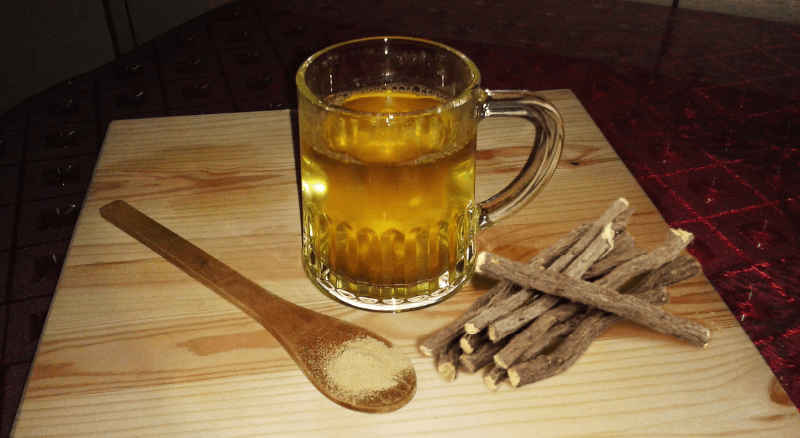Did you know that liquorice or licorice isn’t just a type of sweet?! No? Well, that makes two of us! Today I made the discovery that licorice is actually a plant and like all plants, there are numerous hidden lovely benefits that we can tap into! Also, we can make a lovely homemade infusion out of this plant as well! So let’s get to business and see what our little bat will bring us today.
What is Licorice?
Surprise, surprise, today we have someone from the bean family! A flowering legume that can reach up to 1 meter in height, has lovely pinnate leaves, purple to pale blue flowers, and amazing tasting roots (actual roots, not rhizomes like we use when using ginger)! It is a native plant of Western Asia and Eastern Europe and is commonly used in these countries as a flavoring to candies and tobacco.
Some of the components found in licorice include anethole (an aromatic compound also found in fennel, anise, and star anise), glycyrrhizin (a sweeter than sugar saponin that apparently is successful in combating SARS, CoV, and even COVID), and phytoestrogen (a dietary estrogen derived from plants). This root mainly consists of carbs, with a hint of fat and a tiny touch of protein, it also contains corticosteroid which is toxic, so ingestion of this root should be limited. 100mg per day should be safe, that’s the equivalent of around 70g of licorice-flavored products, it should also be avoided during pregnancy.
Health Benefits
Now let’s dive into the lovely benefits this root has, although a boost against COVID seems the ideal propaganda at the moment:
- Soothes digestive distress
- Helps to soothe mouth ulcers when used as a mouth wash
- Helps to combat post-menopausal symptoms
- Reduces the risk of breast cancer
- Soothes the upper respiratory system (especially good against sore throat, dry cough, and fighting mucus)
- Supports a healthy liver
- Fights fatigue (provides adrenal support)
Side Effects
Remember we said licorice contains corticosteroid which is toxic, so ingestion of this root should be limited to 100mg per day and it should also be avoided during pregnancy? Now let’s see what more side effects I could sniff out with the bat sonar:
- Edema
- Loss of potassium
- Not recommended during pregnancy
- High blood pressure
- Should be avoided by people suffering from heart failure, kidney disease, or liver cirrhosis
Making the Tea
- 2 cm licorice root (1/2 inch)
- 1 cups of water
Today we have another easy recipe, simply slice or crush the root to expose the inner root, pour hot water, and allow to steep and you’re ready to enjoy your infusion! Don’t forget, do not pour boiling water as it may lessen the benefits of your ingredients. This applies to most teas and infusions, always allow the water to boil and allow to cool slightly before mixing it with your ingredients. You may add honey to taste, ginger, fennel, cardamom, tea, and milk! So go ahead and experiment with this root and let us know your findings!

